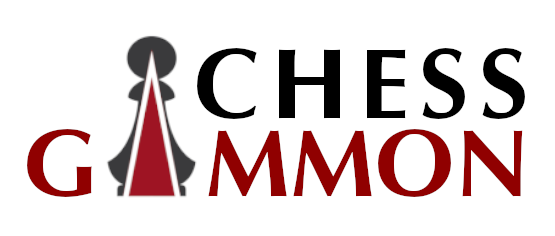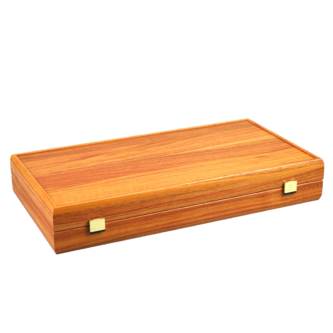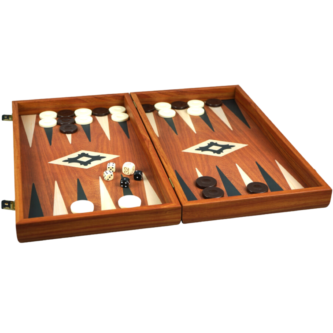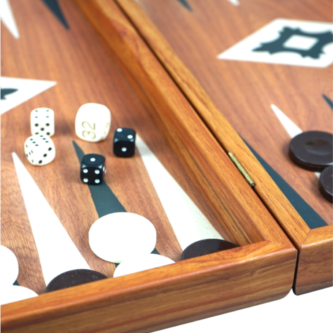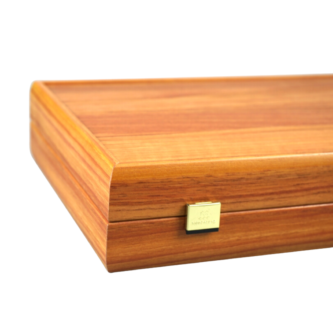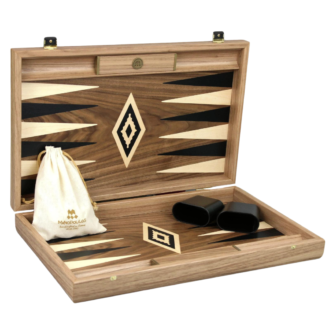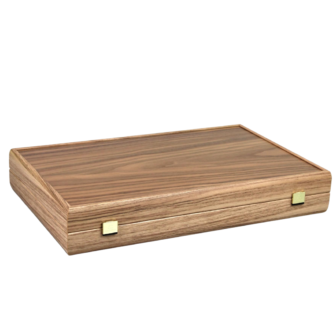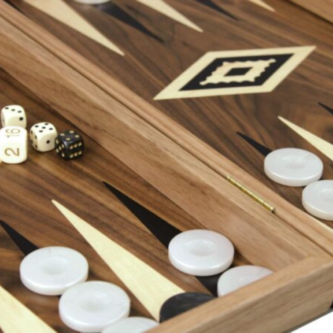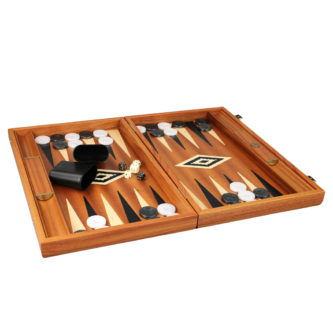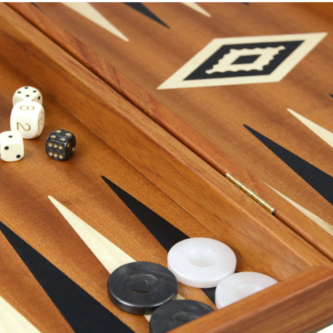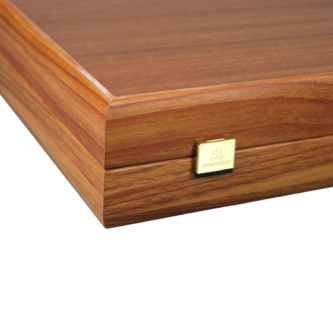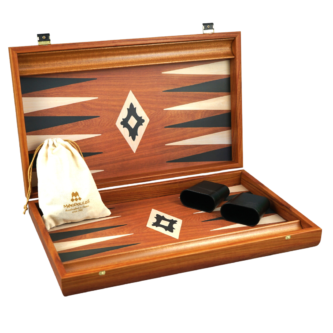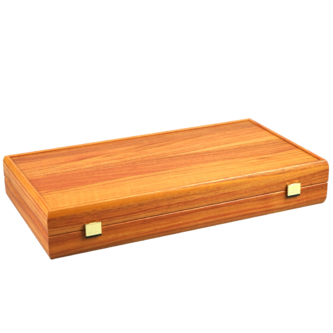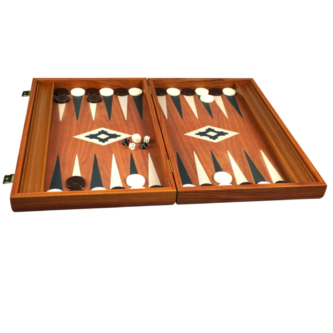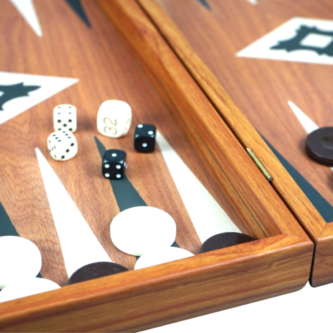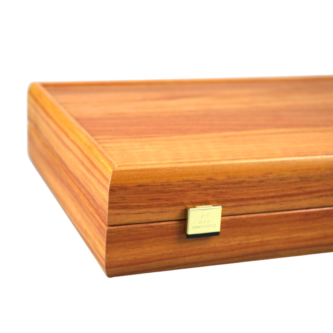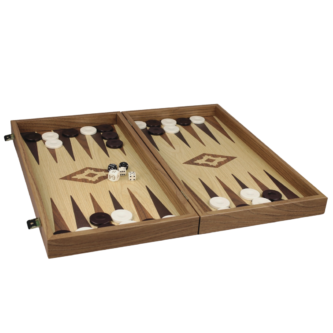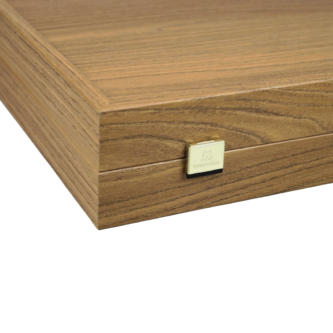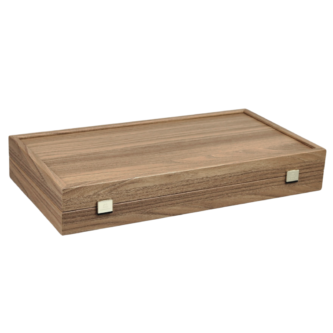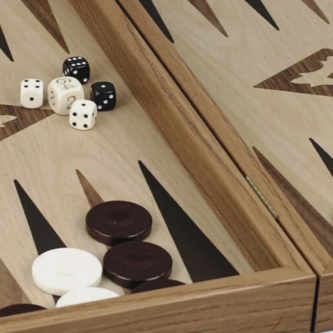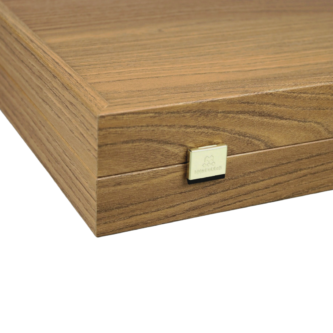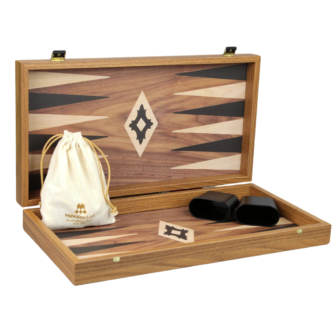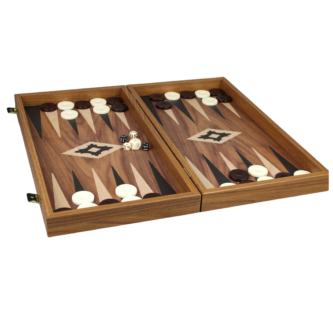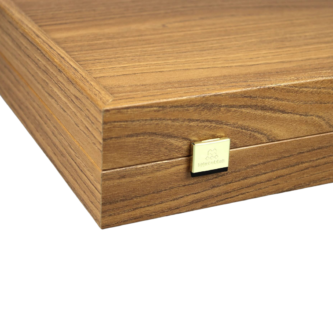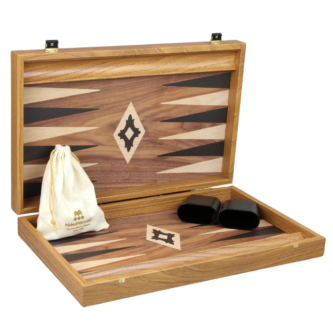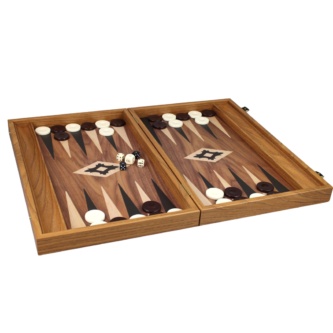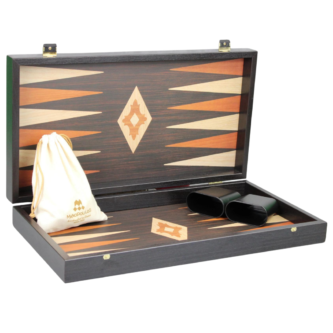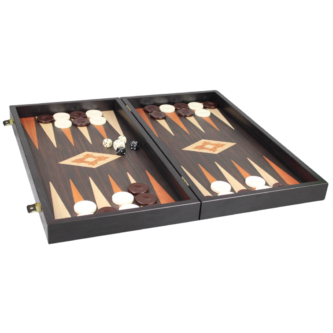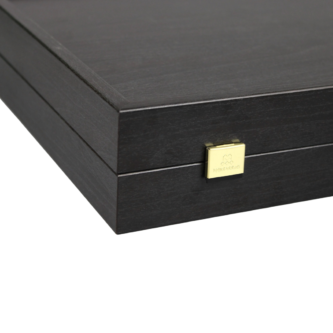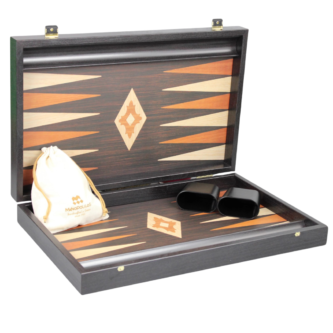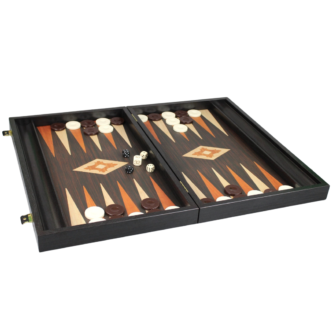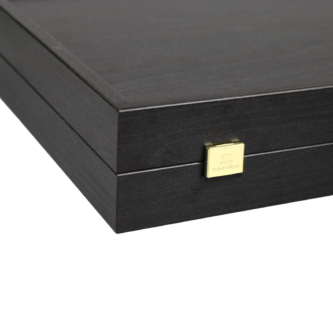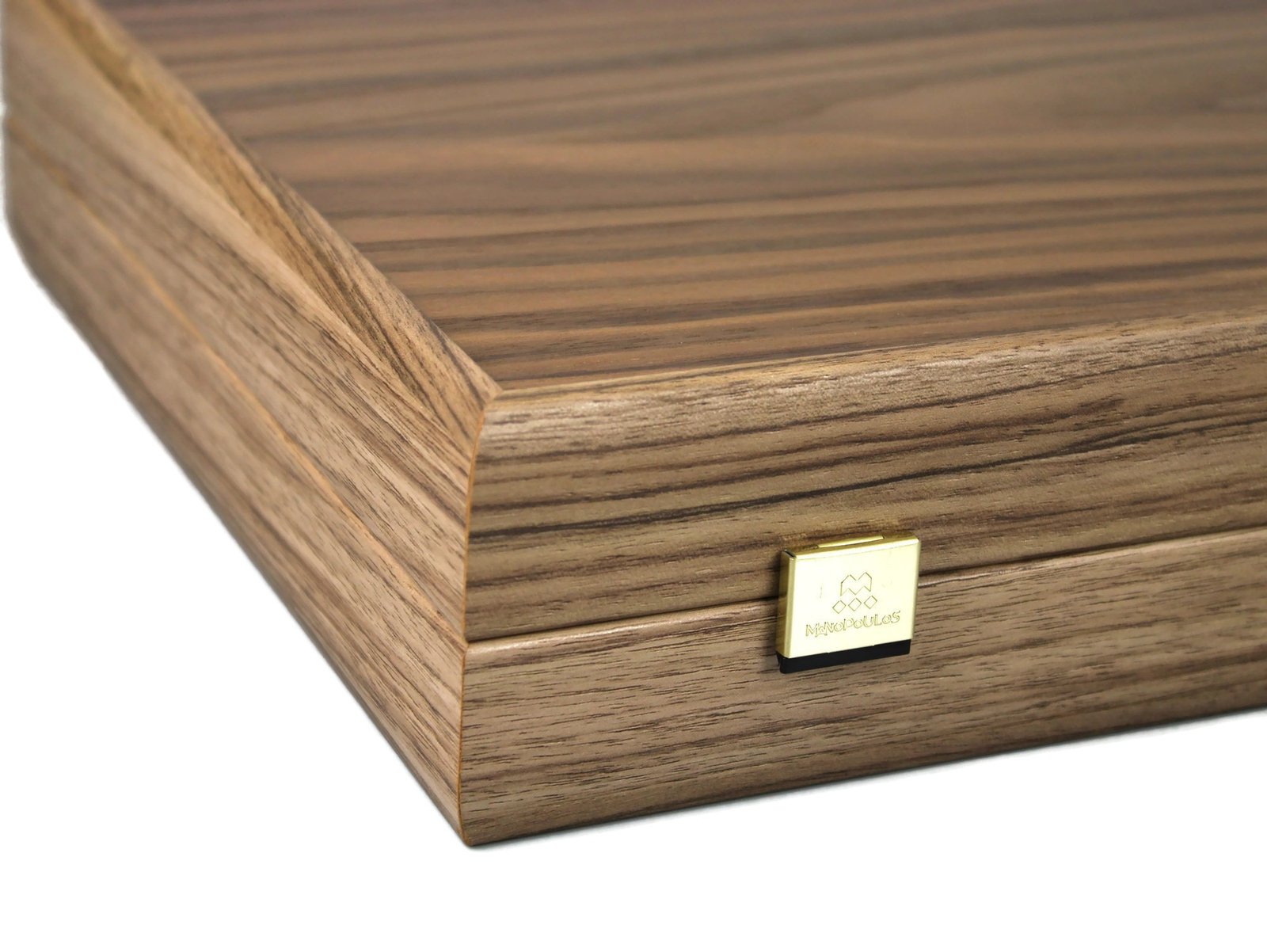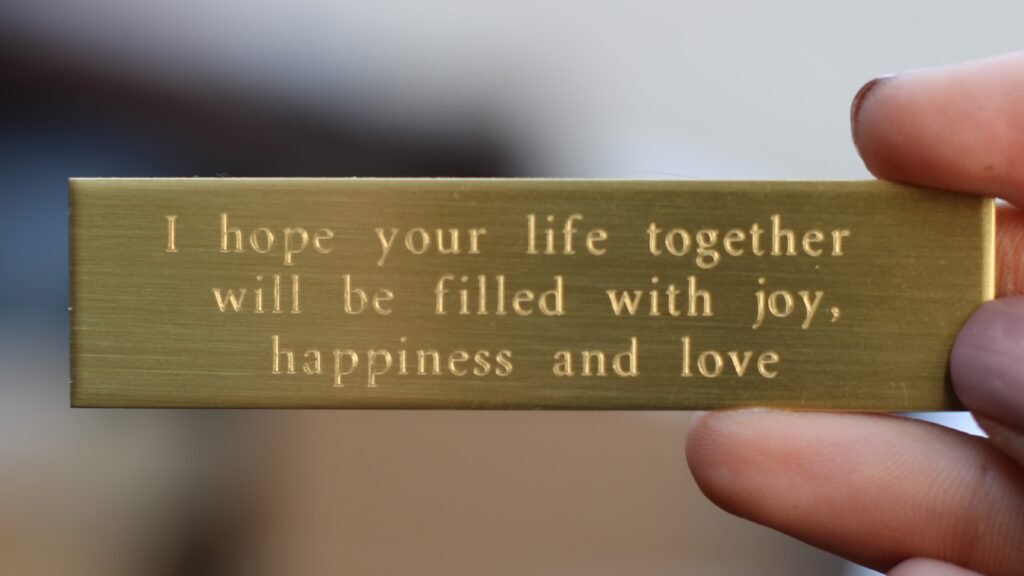Executive Range Backgammon
Backgammon Board: A Guide to Playing, Sizes, and Choosing the Perfect One
Backgammon, a game of strategy, skill, and chance, has captivated players for centuries. At the heart of this timeless game lies the backgammon board, the very stage where battles are fought and victories are won. In this article, we embark on a journey through the world of backgammon boards, providing answers to important questions and offering insights into playing the game, different board sizes, and how to select the perfect board. So, let’s roll the dice, move our checkers, and explore the captivating realm of backgammon boards!
How do you play basic backgammon?
Basic backgammon is a game that follows a set of fundamental rules. Here’s a brief overview of how to play:
- Objective: The primary objective of backgammon is to move all of your checkers into your home board and then bear them off the board. The first player to bear off all their checkers wins the game.
- Rolling the Dice: Backgammon is played with two dice. Each player rolls one die, and the player with the higher number goes first. Both players take turns rolling the dice and making moves based on the numbers rolled.
- Movement: On your turn, you can move your checkers a combined number of points equal to the total displayed on the dice. You have the flexibility to move one checker multiple times or move several checkers individually, as long as the moves are legal. You can move a checker to an open point (not occupied by two or more opposing checkers) or a point occupied by your own checkers.
- Hitting and Re-entering: If you land on a point occupied by a single opposing checker, you can “hit” that checker, sending it to the bar. The opponent must then re-enter that checker into your home board before making any other moves.
- Bearing Off: Once you have moved all your checkers into your home board, you can start bearing them off. To bear off a checker, you must roll a number that corresponds to an open point within the range of your checkers.
- Doubling Cube (optional): In some backgammon games, a doubling cube is used to increase the stakes. The cube starts at 1 and can be doubled by either player during the game, potentially multiplying the point value of the game.
These basic rules provide a foundation for playing backgammon, but the game offers a world of strategies, tactics, and variations that can be explored as you gain experience.
What is the classic size backgammon board?
The classic size of a backgammon board typically falls within the range of 18 to 20 inches when fully opened. These boards are specifically designed to offer a comfortable playing experience, providing adequate space for manoeuvring the checkers and featuring a visually appealing layout. The classic size strikes a balance between portability and usability, making it a popular choice among both casual players and enthusiastic backgammon enthusiasts. Whether you’re playing at home or on the go, the classic size backgammon board offers convenience and an enjoyable gaming experience.
How big is a full-size backgammon board?
A full-size backgammon board is larger than the classic size, providing an elevated and luxurious playing experience. These boards typically measure around 22 to 24 inches when fully opened. The increased size allows for more intricate detailing, larger playing points, and an enhanced visual appeal.
Full-size boards are often favoured by serious backgammon players who desire a more immersive gaming experience. The larger playing surface provides ample space for precise movements and strategic maneuvers. Additionally, full-size boards are often chosen by collectors who appreciate the aesthetic beauty and craftsmanship of these boards as they showcase intricate designs and high-quality materials.
Whether you’re a passionate backgammon player or a collector seeking a visually stunning board, the full-size backgammon board offers a grand and captivating experience that enhances the overall enjoyment of the game.
How do I choose a backgammon board?
Size: Determine whether you prefer a classic size board for its portability or a larger full-size board for an enhanced gaming experience. Consider the available space you have for the board and your personal preferences.
Material: Backgammon boards come in various materials, such as wood, leather, and synthetic options. Consider the aesthetics, durability, and tactile experience provided by different materials. Wood boards offer natural beauty, while leather boards provide a luxurious feel.
Craftsmanship: Pay attention to the craftsmanship and attention to detail. Look for boards with well-constructed playing points, a smooth playing surface, and quality components like checkers and dice. A well-crafted board enhances both the playing experience and the longevity of the game set.
Portability: If you plan to take your backgammon board on the go, consider its portability. Some boards are designed to fold compactly, making them easy to transport and store. Additionally, look for boards that come with a carrying case for added convenience.
Personal Style: Choose a board that resonates with your personal style and taste. Backgammon boards are available in various designs, colours, and patterns, allowing you to find one that reflects your aesthetic preferences. Whether you prefer a traditional or modern design, there’s a board out there that suits your style.
By considering these factors, you can select a backgammon board that meets your specific needs and preferences, ensuring an enjoyable and personalized gaming experience.
What is the best wood for a backgammon board?
Wood is indeed a popular choice for backgammon boards due to its natural beauty and durability. There are several common types of wood used in crafting backgammon boards, each with its own unique characteristics. Let’s explore some of them:
- Walnut: Walnut is favoured for its rich, dark brown hue and elegant appearance. It offers a sophisticated and timeless look, making it a popular choice for backgammon boards.
- Maple: Maple, known for its light colour and fine grain, provides a classic and clean aesthetic. Its subtle and elegant appearance adds a touch of understated beauty to backgammon boards.
- Rosewood: Rosewood exhibits deep, reddish tones and often features striking grain patterns. Its luxurious feel and distinctive colour make it a sought-after choice for those looking for a visually captivating backgammon board.
- Oak: Oak is renowned for its strength, durability, and attractive grain patterns. Its sturdy nature provides a solid playing surface that can withstand the rigors of gameplay, making it a reliable choice for backgammon boards.

Ultimately, the best wood for a backgammon board comes down to personal preference. Consider the grain pattern, colour, and overall design that resonates with you. Each wood type brings its own character and beauty to the board, so choose the wood that speaks to your aesthetic preferences and complements the ambiance you wish to create while playing the game.
By carefully selecting a backgammon board made from the wood that appeals to you, you can enhance your playing experience and enjoy the natural beauty and durability of the chosen material.
The backgammon board serves as the canvas upon which the game of backgammon comes to life, captivating players with its visual appeal and strategic possibilities. By understanding the basics of gameplay, exploring the different board sizes available, and considering your personal preferences for material and craftsmanship, you can select the perfect backgammon board to enhance your playing style and satisfy your aesthetic taste.
Whether you choose a classic size board for its portability or a full-size board for a more immersive experience, the backgammon board sets the stage for hours of entertainment. Consider the material options, such as wood, leather, or synthetic materials, and select the one that aligns with your preferences for aesthetics, durability, and tactile experience.
Craftsmanship is also an essential factor to consider when choosing a backgammon board. Look for well-constructed playing points, a smooth and visually appealing playing surface, and high-quality components like checkers and dice. Attention to detail and quality craftsmanship can greatly enhance your overall gaming experience.
Lastly, choose a backgammon board that reflects your personal style and taste. With a wide variety of designs, colours, and patterns available, you can find a board that resonates with your aesthetic preferences and creates an enjoyable gaming atmosphere.
So, embrace the world of backgammon boards, find the perfect one that suits your needs, set up your checkers, and get ready for an exciting journey through the timeless game of backgammon. May your moves be strategic, your rolls be lucky, and your enjoyment be boundless as you engage in this captivating game on a board that truly complements your playing experience.
